The map function in Python is a handy tool for applying a function to all elements of a list or another sequence. This is particularly useful when you have large amounts of data and want to perform a consistent calculation or transformation on all elements. In this guide, you will learn how to effectively use the map function in Python to convert temperatures between Celsius and Fahrenheit. I will explain everything step by step and show various examples.
Key Takeaways
- The map function takes two arguments: a function and a sequence.
- It applies the function to each element in the sequence and returns the results in a new list.
- You can use the map function with both regular functions and lambda functions.
Step-by-Step Guide
Creating a Conversion Function
First, you need to create a function that converts temperature from Celsius to Fahrenheit. This function will take the temperature (in Celsius) as a parameter and return the corresponding result.
In Python, the function looks like this, and it will be used later in the map function.

Creating the Second Conversion Function
To perform the conversion in the other direction, create a second function that converts from Fahrenheit to Celsius.
With this function, you will be able to convert temperatures from Fahrenheit back to Celsius.
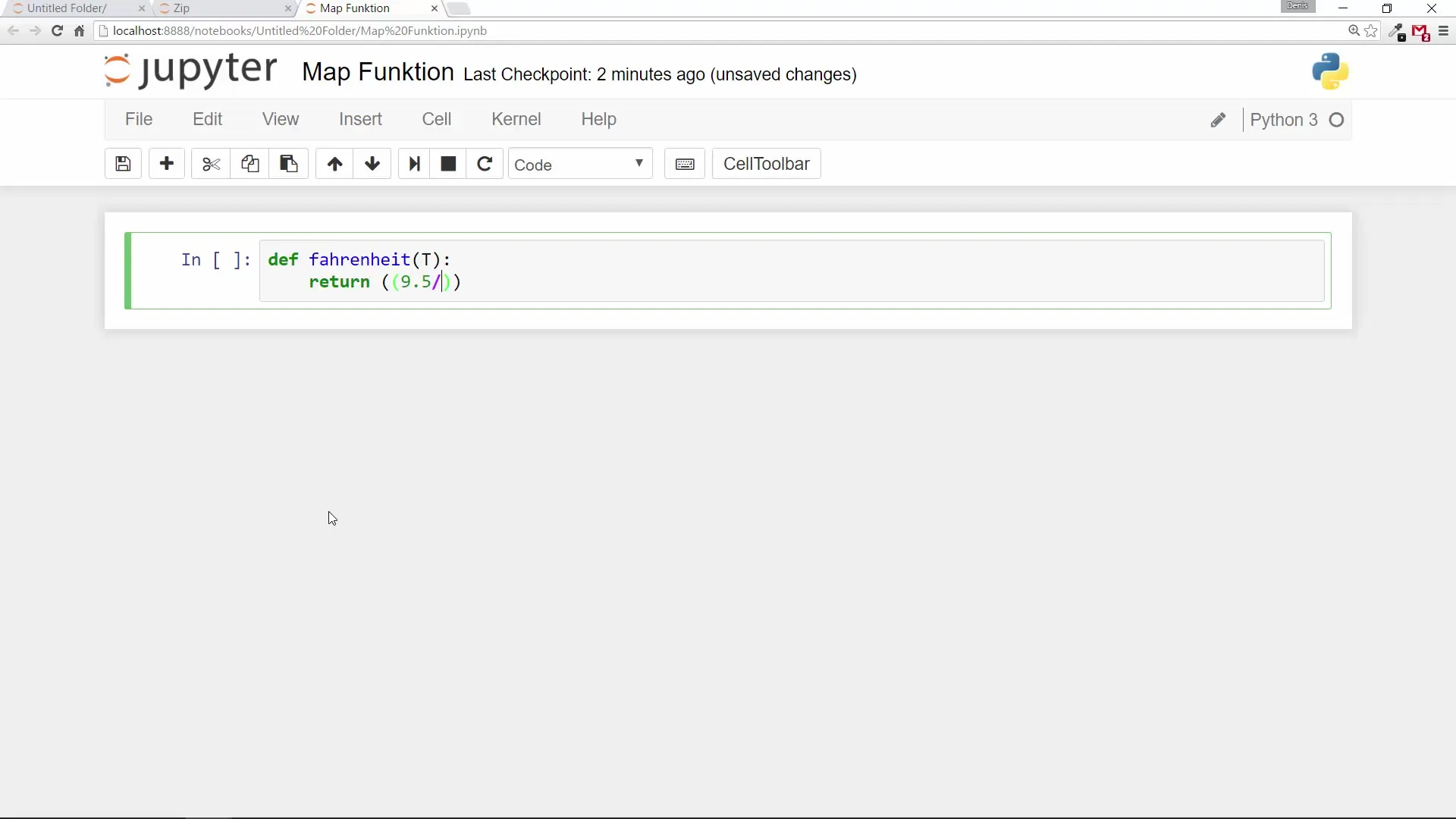
Creating a Temperature List
Now it's time to create a list containing various temperature values in Celsius. These values will subsequently be converted to Fahrenheit.
You can pass this list to the map function to perform the conversion.
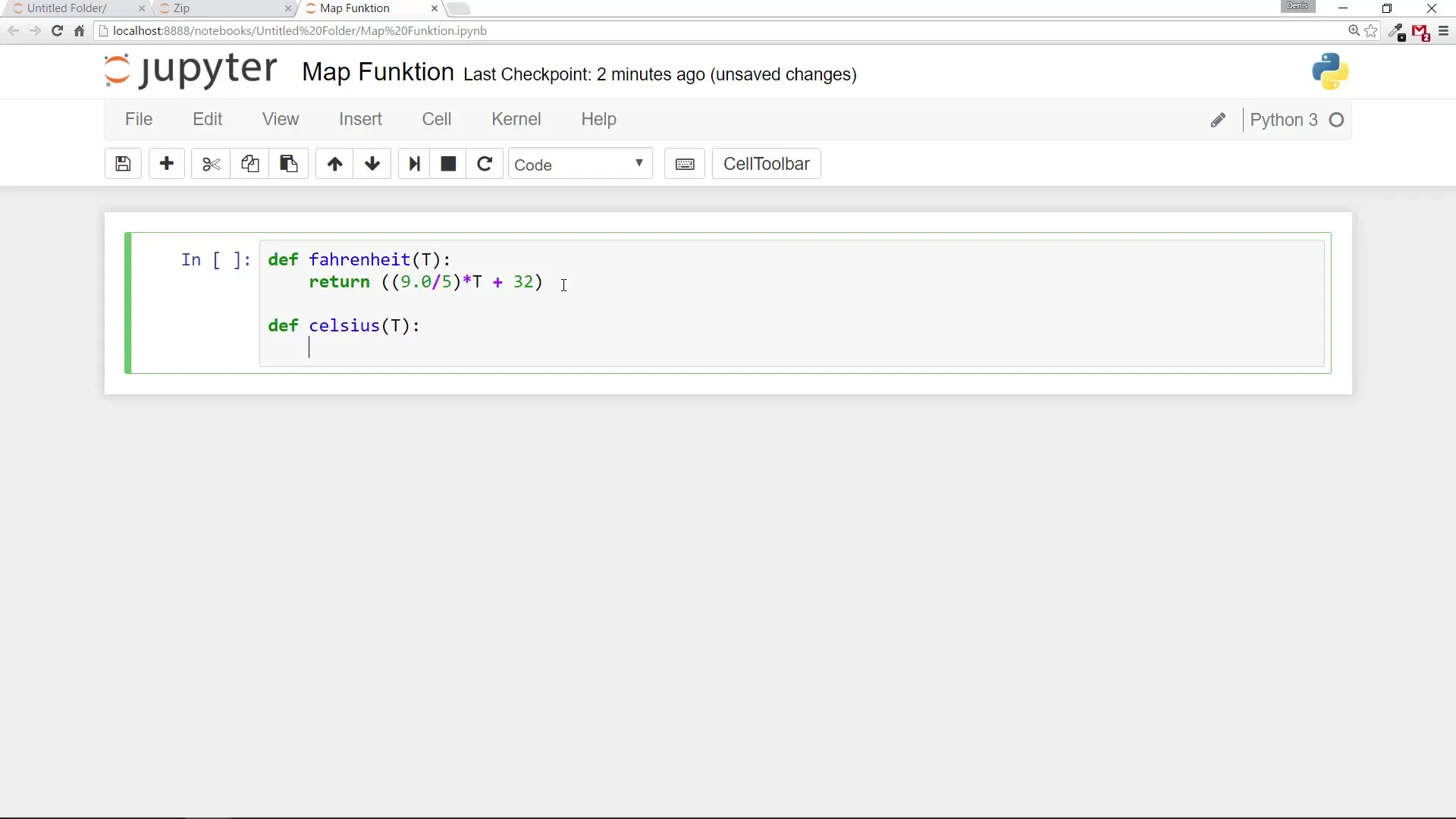
Applying the Map Function
Now you can use the map function to apply the Fahrenheit function to the temperatures in your list.
Here, the fahrenheit function is applied to each element of the temperatures list and the result is stored as a new list f_list.
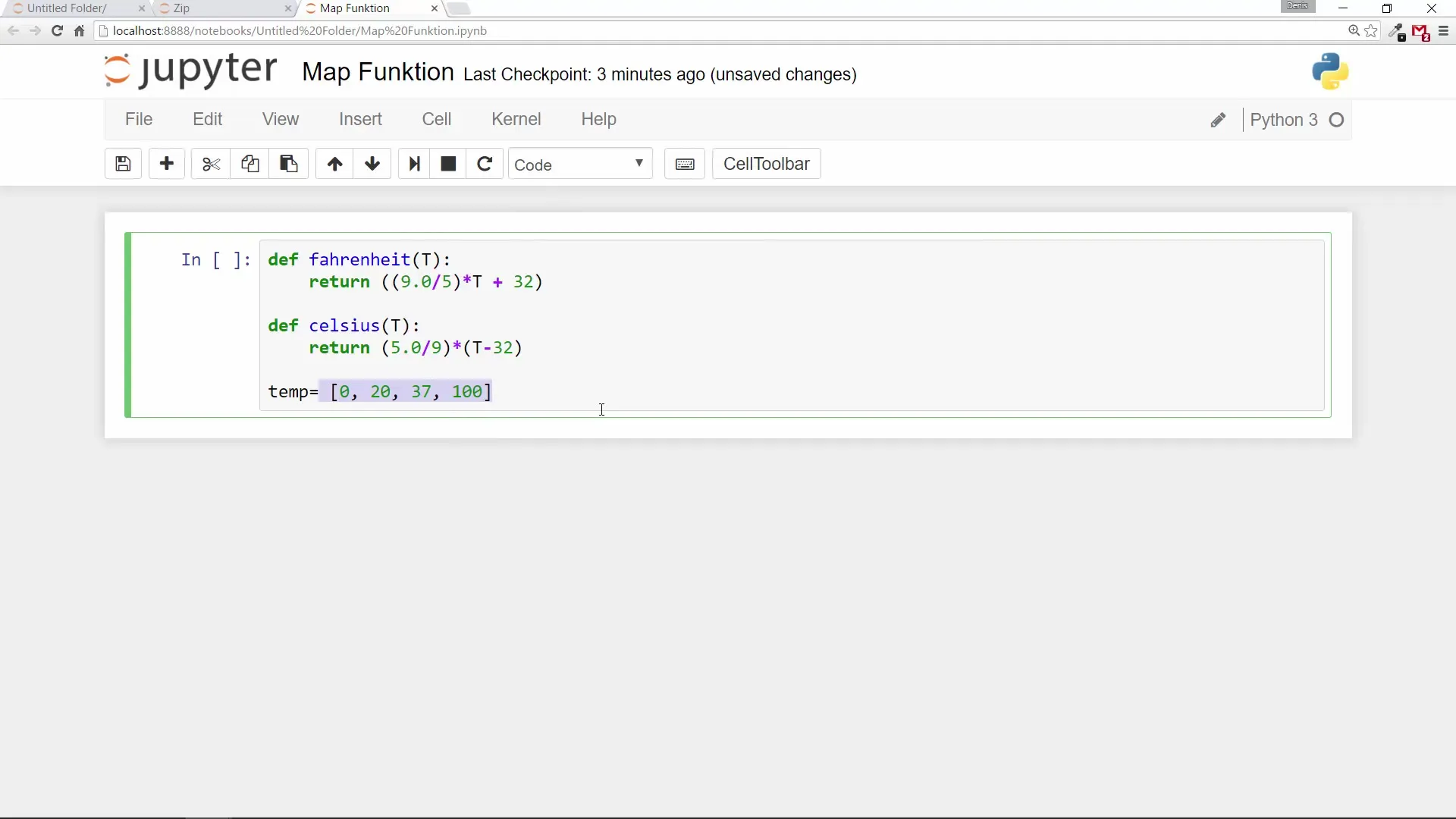
Outputting the Results
To print the results, simply output the list f_list.
The result will show you which Fahrenheit values correspond to the Celsius values.
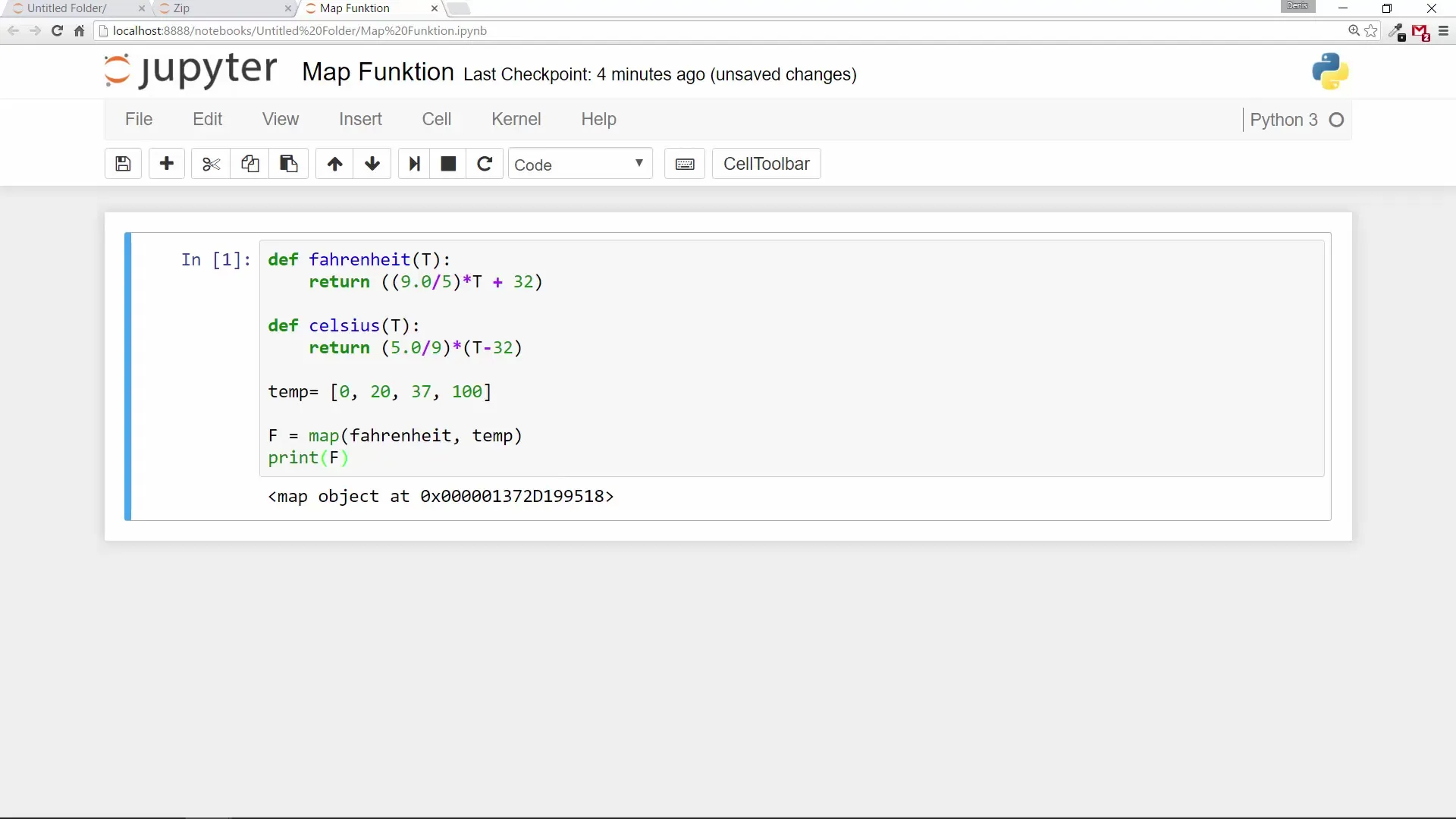
Converting the Fahrenheit Values Back to Celsius
Now you can use the map function again, but this time to convert the Fahrenheit values back to Celsius.
Here, the celsius function is applied to each element of the f_list.
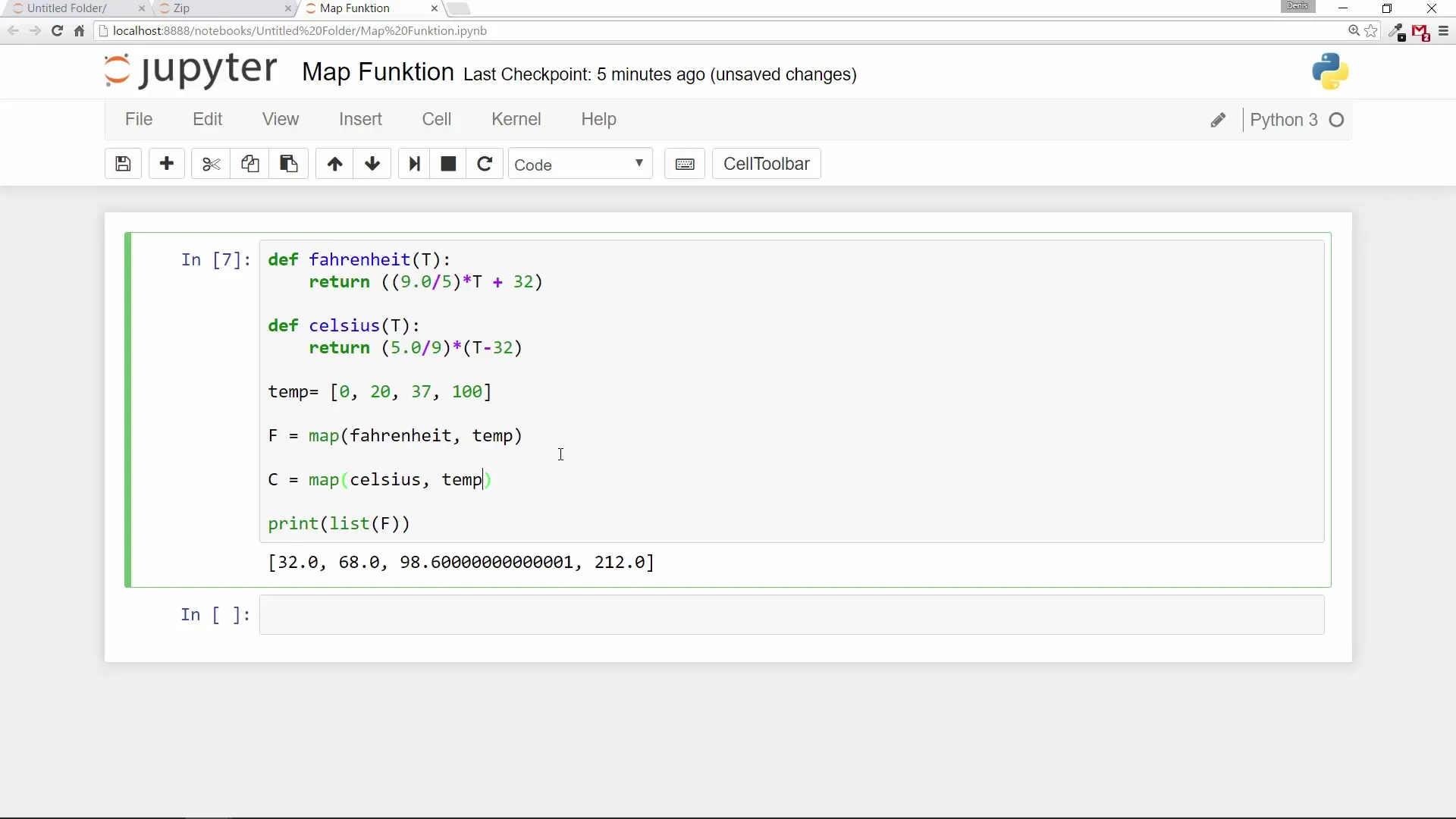
Using Lambda Functions
Alternatively, you can also use lambda functions to achieve the same result.
This significantly simplifies the process, as you define the function directly within the map statement.
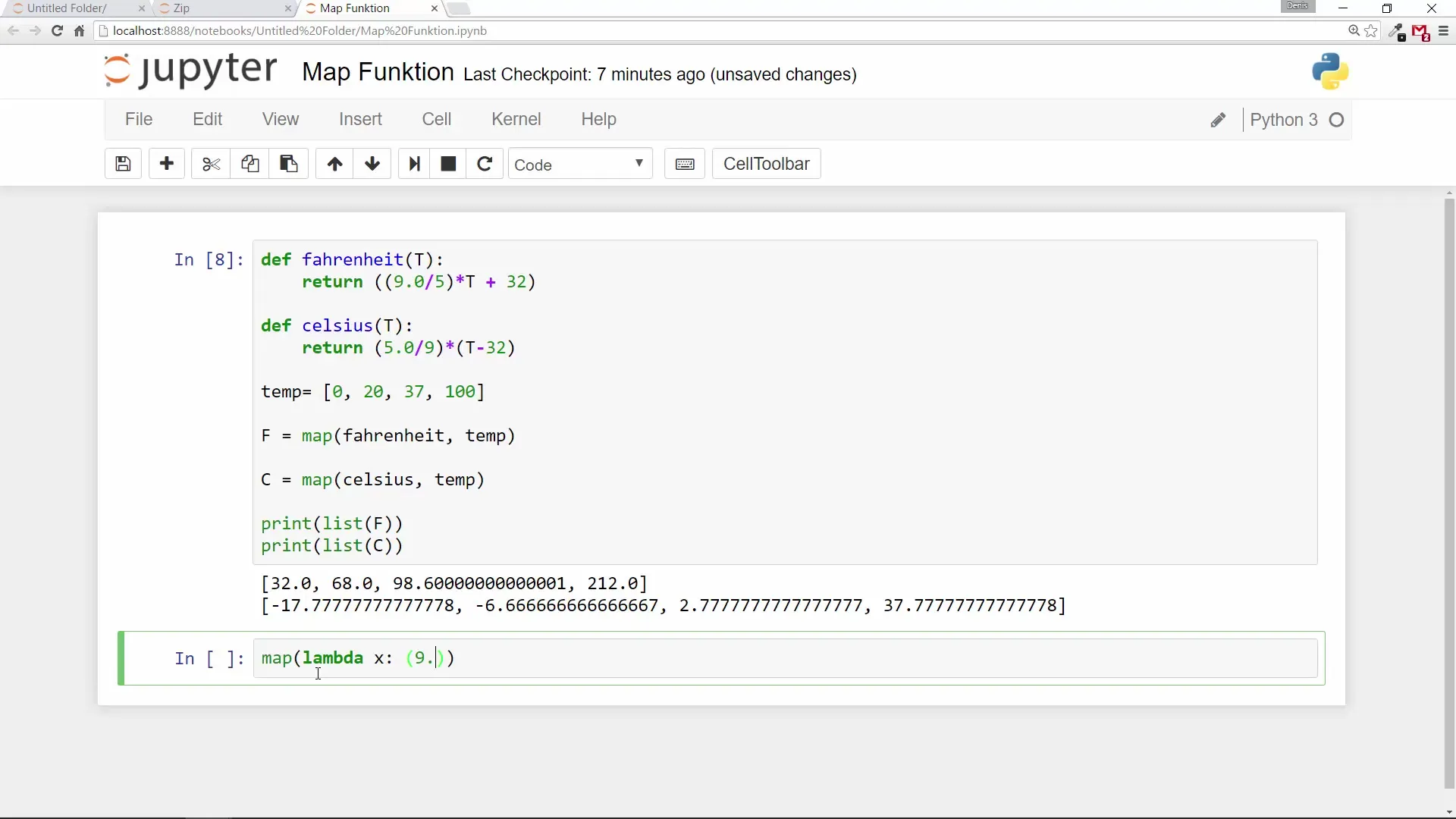
Further Applications
You can perform various calculations with the map function, not just temperature conversions. It works with lists of any type, whether numbers, strings, or custom objects. You can utilize the flexibility of this function to transform your data before further processing.
Summary - Map Function in Python in Detail
The map function in Python is a powerful tool that helps you apply a function to all elements of a sequence and efficiently store the results in a new list. You have learned how to create two conversion functions for temperature conversion, how to apply the map function, and that lambda functions also provide an excellent option for keeping the code short and concise.
Frequently Asked Questions
What is the map function in Python?The map function applies a specified function to all elements of a sequence and returns the results in a new list.
How many arguments does the map function take?The map function takes two arguments: a function and a sequence.
Can I use the map function with lambda functions?Yes, the map function can also be used with lambda functions to make the code shorter and more readable.


